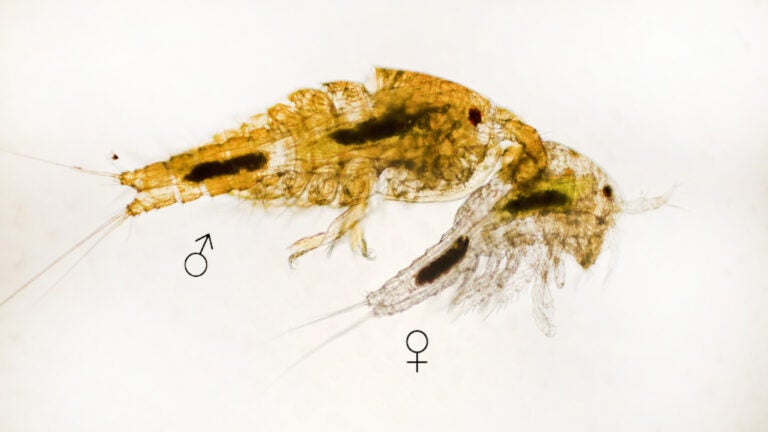
Discovery of vast sex differences in cellular activity has major implications for disease treatment
“We discovered a pronounced ‘men are from Mars, women are from Venus’ pattern,” says marine and environmental biologist Suzanne Edmands.
She refers not to human psychology, but rather to mitochondria, the cell components responsible for generating energy.
Edmands, professor of biological sciences at the USC Dornsife College of Letter, Arts and Sciences, recently published research in the Proceedings of the National Academy of Sciences that reveals vast differences in gene activity within the mitochondria of males compared to females.
Although the study looks at tiny marine organisms called copepods, Edmands says the findings have weighty implications for human medicine. “The mitochondrial genome of these animals is very much like ours — same genes, same functions and similar genome size.”
Hundreds of human diseases are linked to dysfunctional mitochondria, affecting muscles, organs such as the liver and pancreas, the brain, and even the eyes and ears. Examples include muscular dystrophy, diabetes and Alzheimer’s disease.
Current treatments for these diseases are largely identical for men and women, but Edmands believes her study indicates this approach is often flawed. “Our findings highlight the necessity of developing sex-specific mitochondrial therapies.”
Mitochondria behave differently in males and females
Scientists believe mitochondria originated as a single-cell organism that was engulfed by another about 1.5 billion years ago. Over time, these engulfed organisms evolved to specialize in energy production for their host cells. This symbiotic relationship has proven so beneficial that it has persisted through eons of evolution.
This ancient co-mingling of two organisms explains why mitochondria have their own genome, separate from the cell’s nucleus.
It has already been established that gene activity within mitochondria varies depending on an organism’s sex. “Mitochondrial function can differ between males and females, which typically have different energetic needs and tradeoffs,” Edmands explains.
But Edmands wanted to learn more about these differences between the sexes. Her study sought to identify which mitochondrial genes are most active in males and which are most active in females, and how these genes interact with nuclear genes in both sexes.
To ensure she was observing sex differences caused by mitochondria, she studied a copepod species that lacks sex chromosomes.
Sex chromosomes also cause differences between females and males, and these sex chromosome effects are hard to disentangle from sex-specific mitochondrial effects.
Mitochondria study reveals major sex differences
Edmands’ group is the first to test effects of all 37 genes in the mitochondrial genome — genes that copepods and humans share.
She found that males demonstrate more activity across all protein-coding mitochondrial genes than females. Males also exhibit higher expression of nuclear and mitochondrial genes that interact with each other to affect energy metabolism in cells.
Females, on the other hand, have higher expression of genes linked specifically to producing and maintaining mitochondria.
Why are these differences significant? Despite mitochondria containing only a tiny fraction of the DNA found in the nucleus, the study showed that mitochondrial genes affected processes across all 12 chromosomes within the nucleus, exerting a global influence.
Moreover, the mitochondrial and nuclear genes that interacted were almost completely different between the sexes.
Guidance for mitochondrial diseases
Edmands says the findings can help inform approaches to treating mitochondrial diseases in humans, particularly mitochondrial replacement therapy. This technique involves replacing defective mitochondria in a mother’s egg with healthy mitochondria from a donor.
“Our results show that swapping in a different mitochondrial type is not like changing a battery,” she says. “Mismatches between the donor mitochondria and nuclear DNA can have sex-specific repercussions throughout the genome.”
Understanding which nuclear and mitochondrial genes interact, and the differences in those interactions between males and females, could help clinicians select the right type of mitochondria to ensure greater success with these therapies.
More mitochondrial work ahead
In future studies, Edmands hopes to use additional methods to investigate sex-specific differences in mitochondrial function. She believes her study design, which avoids sex chromosomes, may also prompt other scientists to engage in similar research.
“I believe scientists will find this a particularly convincing demonstration of sex-specific mitochondrial effects on gene expression because it isn’t confounded by sex chromosome effects,” she said.